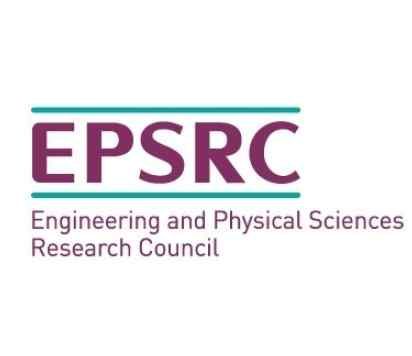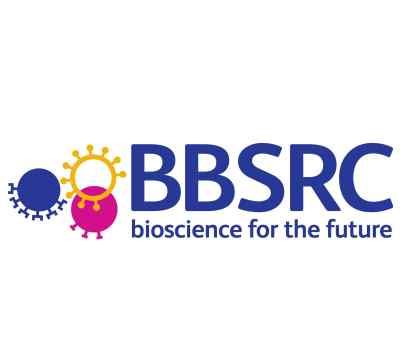Biological systems - including the simplest cells - exhibit a broad range of functions to thrive in their environment. Research in the Imperial College Centre for Synthetic Biology is focused on the possibility of engineering the underlying biochemical processes to solve many of the challenges facing society, from healthcare to sustainable energy. In particular, we model, analyse, design and build biological and biochemical systems in living cells and/or in cell extracts, both exploring and enhancing the engineering potential of biology.
As part of our research we develop novel methods to accelerate the celebrated Design-Build-Test-Learn synthetic biology cycle. As such research in the Centre for Synthetic Biology highly multi- and interdisciplinary covering computational modelling and machine learning approaches; automated platform development and genetic circuit engineering ; multi-cellular and multi-organismal interactions, including gene drive and genome engineering; metabolic engineering; in vitro/cell-free synthetic biology; engineered phages and directed evolution; and biomimetics, biomaterials and biological engineering.
Publications
Results
- Showing results for:
- Reset all filters
Search results
-
Journal articleBaig H, Fontanarrosa P, Kulkarni V, et al., 2020,
Synthetic biology open language visual (SBOL visual) version 2.2
, Journal of Integrative Bioinformatics, Vol: 17, Pages: 1-85, ISSN: 1613-4516People who are engineering biological organisms often find it useful to communicate in diagrams, both about the structure of the nucleic acid sequences that they are engineering and about the functional relationships between sequence features and other molecular species. Some typical practices and conventions have begun to emerge for such diagrams. The Synthetic Biology Open Language Visual (SBOL Visual) has been developed as a standard for organizing and systematizing such conventions in order to produce a coherent language for expressing the structure and function of genetic designs. This document details version 2.2 of SBOL Visual, which builds on the prior SBOL Visual 2.1 in several ways. First, the grounding of molecular species glyphs is changed from BioPAX to SBO, aligning with the use of SBO terms for interaction glyphs. Second, new glyphs are added for proteins, introns, and polypeptide regions (e. g., protein domains), the prior recommended macromolecule glyph is deprecated in favor of its alternative, and small polygons are introduced as alternative glyphs for simple chemicals.
-
Journal articleTica J, Zhu T, Isalan M, 2020,
Dynamical model fitting to a synthetic positive feedback circuit in E. coli
, Engineering Biology, Vol: 4, Pages: 25-31, ISSN: 2398-6182Applying the principles of engineering to Synthetic Biology relies on the development of robust and modular genetic components, as well as underlying quantitative dynamical models that closely predict their behaviour. This study looks at a simple positive feedback circuit built by placing filamentous phage secretin pIV under a phage shock promoter. A single-equation ordinary differential equation model is developed to closely replicate the behaviour of the circuit, and its response to inhibition by TetR. A stepwise approach is employed to fit the model's parameters to time-series data for the circuit. This approach allows the dissection of the role of different parameters and leads to the identification of dependencies and redundancies between parameters. The developed genetic circuit and associated model may be used as a building block for larger circuits with more complex dynamics, which require tight quantitative control or tuning.
-
Journal articleKotidis P, Kontoravdi K, 2020,
Harnessing the potential of artificial neural networks for predicting protein glycosylation
, Metabolic Engineering Communications, Vol: 10, ISSN: 2214-0301Kinetic models offer incomparable insight on cellular mechanisms controlling protein glycosylation. However, their ability to reproduce site-specific glycoform distributions depends on accurate estimation of a large number of protein-specific kinetic parameters and prior knowledge of enzyme and transport protein levels in the Golgi membrane. Herein we propose an artificial neural network (ANN) for protein glycosylation and apply this to four recombinant glycoproteins produced in Chinese hamster ovary (CHO) cells, two monoclonal antibodies and two fusion proteins. We demonstrate that the ANN model accurately predicts site-specific glycoform distributions of up to eighteen glycan species with an average absolute error of 1.1%, correctly reproducing the effect of metabolic perturbations as part of a hybrid, kinetic/ANN, glycosylation model (HyGlycoM), as well as the impact of manganese supplementation and glycosyltransferase knock out experiments as a stand-alone machine learning algorithm. These results showcase the potential of machine learning and hybrid approaches for rapidly developing performance-driven models of protein glycosylation.
-
Journal articleOuldridge T, Turberfield A, Mullor Ruiz I, et al., 2020,
Design of hidden thermodynamic driving for non-equilibrium systems via mismatch elimination during DNA strand displacement
, Nature Communications, Vol: 11, ISSN: 2041-1723Recent years have seen great advances in the development of synthetic self-assembling molecular systems. Designing out-of-equilibrium architectures, however, requires a more subtle control over the thermodynamics and kinetics of reactions. We propose a mechanism for enhancing the thermodynamic drive of DNA strand-displacement reactions whilst barely perturbing forward reaction rates: the introduction of mismatches within the initial duplex. Through a combination of experiment and simulation, we demonstrate that displacement rates are strongly sensitive to mismatch location and can be tuned by rational design. By placing mismatches away from duplex ends, the thermodynamic drive for a strand-displacement reaction can be varied without significantly affecting the forward reaction rate. This hidden thermodynamic driving motif is ideal for the engineering of non-equilibrium systems that rely on catalytic control and must be robust to leak reactions.
-
Journal articleArpino JAJ, Polizzi KM, 2020,
A modular method for directing protein self-assembly
, ACS Synthetic Biology, Vol: 9, Pages: 993-1002, ISSN: 2161-5063Proteins are versatile macromolecules with diverse structure, charge, and function. They are ideal building blocks for biomaterials for drug delivery, biosensing, or tissue engineering applications. Simultaneously, the need to develop green alternatives to chemical processes has led to renewed interest in multienzyme biocatalytic routes to fine, specialty, and commodity chemicals. Therefore, a method to reliably assemble protein complexes using protein-protein interactions would facilitate the rapid production of new materials. Here we show a method for modular assembly of protein materials using a supercharged protein as a scaffolding "hub" onto which target proteins bearing oppositely charged domains have been self-assembled. The physical properties of the material can be tuned through blending and heating and disassembly triggered using changes in pH or salt concentration. The system can be extended to the synthesis of living materials. Our modular method can be used to reliably direct the self-assembly of proteins using small charged tag domains that can be easily encoded in a fusion protein.
-
Journal articleKelwick R, Webb A, Freemont P, 2020,
Biological materials: the next frontier for cell-free synthetic biology
, Frontiers in Bioengineering and Biotechnology, Vol: 8, ISSN: 2296-4185Advancements in cell-free synthetic biology are enabling innovations in sustainable biomanufacturing, that may ultimately shift the global manufacturing paradigm toward localized and ecologically harmonized production processes. Cell-free synthetic biology strategies have been developed for the bioproduction of fine chemicals, biofuels and biological materials. Cell-free workflows typically utilize combinations of purified enzymes, cell extracts for biotransformation or cell-free protein synthesis reactions, to assemble and characterize biosynthetic pathways. Importantly, cell-free reactions can combine the advantages of chemical engineering with metabolic engineering, through the direct addition of co-factors, substrates and chemicals –including those that are cytotoxic. Cell-free synthetic biology is also amenable to automatable design cycles through which an array of biological materials and their underpinning biosynthetic pathways can be tested and optimized in parallel. Whilst challenges still remain, recent convergences between the materials sciences and these advancements in cell-free synthetic biology enable new frontiers for materials research.
-
Journal articleCaro-Astorga J, Walker KT, Ellis T, 2020,
Bacterial cellulose spheroids as building blocks for 2D and 3D engineered living materials
<jats:title>Abstract</jats:title><jats:p>Engineered living materials (ELMs) based on bacterial cellulose (BC) offer a promising avenue for cheap-to-produce materials that can be programmed with genetically encoded functionalities. Here we explore how ELMs can be fabricated from millimetre-scale balls of cellulose occasionally produced by<jats:italic>Acetobacteriacea</jats:italic>species, which we call BC spheroids. We define a reproducible protocol to produce BC spheroids and demonstrate their potential for use as building blocks to grow ELMs in 2D and 3D shapes. These BC spheroids can be genetically functionalized and used as the method to make and grow patterned BC-based ELMs to design. We further demonstrate the use of BC spheroids for the repair and regeneration of BC materials, and measure the survival of the BC-producing bacteria in the material over time. This work forwards our understanding of BC spheroid formation and showcases their potential for creating and repairing engineered living materials.</jats:p>
-
Journal articleHoermann A, Tapanelli S, Capriotti P, et al., 2020,
Converting endogenous genes of the malaria mosquito into simple non-autonomous gene drives for population replacement
<jats:title>Abstract</jats:title><jats:p>Gene drives for mosquito population replacement are promising tools for malaria control. However, there is currently no clear pathway for safely testing such tools in endemic countries. The lack of well-characterized promoters for infection-relevant tissues and regulatory hurdles are further obstacles for their design and use. Here we explore how minimal genetic modifications of endogenous mosquito genes can convert them directly into non-autonomous gene drives without disrupting their expression. We co-opted the native regulatory sequences of three midgut-specific loci of the malaria vector<jats:italic>Anopheles gambiae</jats:italic>to host a prototypical antimalarial molecule and guide-RNAs encoded within artificial introns, that support efficient gene drive. We assess the propensity of these modifications to interfere with the development of<jats:italic>Plasmodium falciparum</jats:italic>and their effect on fitness. Because of their inherent simplicity and passive mode of drive such traits could form part of an accepted testing pathway of gene drives for malaria eradication.</jats:p>
-
Journal articleBeal J, Goñi-Moreno A, Myers C, et al., 2020,
The long journey towards standards for engineering biosystems: Are the Molecular Biology and the Biotech communities ready to standardise?
, EMBO Reports, Vol: 21, Pages: 1-5, ISSN: 1469-221XSynthetic biology needs to adopt sound scientific and industry-like standards in order to achieve its ambitious goals of efficient and accurate engineering of biological systems.
-
Journal articleCrone MA, Priestman M, Ciechonska M, et al., 2020,
A new role for Biofoundries in rapid prototyping, development, and validation of automated clinical diagnostic tests for SARS-CoV-2
<jats:title>Abstract</jats:title><jats:p>The SARS-CoV-2 pandemic has shown how the rapid rise in demand for patient and community sample testing, required for tracing and containing a highly infectious disease, has quickly overwhelmed testing capability globally. With most diagnostic infrastructure dependent on specialised instruments, their exclusive reagent supplies quickly become bottlenecks in times of peak demand, creating an urgent need for novel approaches to boost testing capacity. We address this challenge by refocusing the full synthetic biology stack available at the London Biofoundry onto the development of alternative patient sample testing pipelines. We present a reagent-agnostic automated SARS-CoV-2 testing platform that can be quickly deployed and scaled, and that accepts a diverse range of reagents. Using an in-house-generated, open-source, MS2-virus-like-particle-SARS-CoV-2 standard, we validate RNA extraction and RT-qPCR workflows as well as two novel detection assays based on CRISPR-Cas and Loop-mediated isothermal Amplification (LAMP) approaches. In collaboration with an NHS diagnostic testing lab, we report the performance of the overall workflow and benchmark SARS-CoV-2 detection in patient samples via RT-qPCR, CRISPR-Cas, and LAMP against clinical test sets. The validated RNA extraction and RT-qPCR platform has been installed in NHS diagnostic labs and now contributes to increased patient sample processing in the UK while we continue to refine and develop novel high-throughput diagnostic methods. Finally, our workflows and protocols can be quickly implemented and adapted by members of the Global Biofoundry Alliance and the wider scientific and medical diagnostics community.</jats:p>
-
Journal articleMcFarlane C, Murray J, 2020,
A sensitive coupled enzyme assay for measuring kinase and ATPase kinetics using ADP-specific hexokinase
, Bio-protocol, Vol: 10, Pages: 1-10, ISSN: 2331-8325Kinases and ATPases perform essential biological functions in metabolism and regulation.Activity of these enzymes is commonly measured by coupling ATP consumption to the synthesis of adetectable product. For most assay systems the ATP concentration during the reaction is unknown,compromising the precision of the assay. Using the ADP-specific hexokinase (ADP-HK) from the thermophilic archaeon Thermococcus litoralisthe protocol outlined here allows real time coupling of ATP consumption to downstream signal changeenabling accurate kinetic measurements. ADP-HK phosphorylates glucose that is then used by glucose6-phosphate dehydrogenase to reduce NAD+ to NADH which can be measured at 340 nm. We haveshown this assay to be sensitive to the detection of micromole quantities of ADP with no detectablebackground from ATP.
-
Journal articleLv X, Wu Y, Tian R, et al., 2020,
Synthetic metabolic channel by functional membrane microdomains for compartmentalized flux control
, Metabolic Engineering, Vol: 59, Pages: 106-118, ISSN: 1096-7176The anchoring of metabolic pathway enzymes to spatial scaffolds can significantly improve their reaction efficiency. Here, we successfully constructed a multi-enzyme complex assembly system able to enhance bioproduction in bacteria by using the endogenous spatial scaffolds─functional membrane microdomains (FMMs). First, using VA-TIRFM and SPT analysis, we reveal that FMMs possess high temporal and spatial stability at the plasma membrane and can be used as endogenous spatial scaffolds to organize enzyme pathways. Then, taking the synthesis of N-acetylglucosamine (GlcNAc) in Bacillus subtilis as a proof-of-concept demonstration, we found that anchoring of various enzymes required for GlcNAc synthesis onto FMMs to obtain the FMMs-multi-enzyme complex system resulted in a significant increase in GlcNAc titer and an effectively alleviate in cell lysis at the later stage of fermentation compared to that in control strains expressing the related enzymes in the cytoplasm. Combining with metabolic model and kinetics analysis, the existence of a constructed substrate channel that maximizes the reaction efficiency is verified. In summary, we propose a novel metabolic pathway assembly model which allowed improved titers and compartmentalized flux control with high spatial resolution in bacterial metabolism.
-
Journal articleWilkinson MD, Lai H-E, Freemont PS, et al., 2020,
A biosynthetic platform for antimalarial drug discovery
, Antimicrobial Agents and Chemotherapy, Vol: 64, Pages: 1-9, ISSN: 0066-4804Advances in synthetic biology have enabled production of a variety of compounds using bacteria as a vehicle for complex compound biosynthesis. Violacein, a naturally occurring indole pigment with antibiotic properties, can be biosynthetically engineered in Escherichia coli expressing its non-native synthesis pathway. To explore whether this synthetic biosynthesis platform could be used for drug discovery, here we have screened bacterially-derived violacein against the main causative agent of human malaria, Plasmodium falciparum. We show the antiparasitic activity of bacterially-derived violacein against the P. falciparum 3D7 laboratory reference strain as well as drug-sensitive and resistant patient isolates, confirming the potential utility of this drug as an antimalarial. We then screen a biosynthetic series of violacein derivatives against P. falciparum growth. The demonstrated varied activity of each derivative against asexual parasite growth points to potential for further development of violacein as an antimalarial. Towards defining its mode of action, we show that biosynthetic violacein affects the parasite actin cytoskeleton, resulting in an accumulation of actin signal that is independent of actin polymerization. This activity points to a target that modulates actin behaviour in the cell either in terms of its regulation or its folding. More broadly, our data show that bacterial synthetic biosynthesis could become a suitable platform for antimalarial drug discovery with potential applications in future high-throughput drug screening with otherwise chemically-intractable natural products.
-
Journal articleDebalke S, Habtewold T, Christophides GK, et al., 2020,
Stability of the effect of silencing fibronectin type III domain-protein 1 (FN3D1) gene on Anopheles arabiensis reared under different breeding site conditions
, Parasites and Vectors, Vol: 13, Pages: 1-9, ISSN: 1756-3305BackgroundMalaria vector mosquitoes acquire midgut microbiota primarily from their habitat. The homeostasis of these microbial communities plays an essential role in the mosquito longevity, the most essential factor in the mosquito vectorial capacity. Our recent study revealed that silencing genes involved in regulation of the midgut homeostasis including FN3D1, FN3D3 and GPRGr9 reduced the survival of female adult Anopheles arabiensis mosquitoes. In the present study, we investigate the stability of the gene silencing efficiency of mosquitoes reared in three different breeding conditions representing distinct larval habitat types: town brick pits in Jimma, flood pools in the rural land of Asendabo and roadside pools in Wolkite.MethodsFirst-instar larvae of An. arabiensis mosquitoes were reared separately using water collected from the three breeding sites. The resulting adult females were micro-injected with dsRNA targeting the FN3D1 gene (AARA003032) and their survival was monitored. Control mosquitoes were injected with dsRNA Lacz. In addition, the load of midgut microbiota of these mosquitoes was determined using flow cytometry.ResultsSurvival of naïve adult female mosquitoes differed between the three sites. Mosquitoes reared using water collected from brick pits and flood pools survived longer than mosquitoes reared using water collected from roadside. However, the FN3D1 gene silencing effect on survival did not differ between the three sites.ConclusionsThe present study revealed that the efficacy of FN3D1 gene silencing is not affected by variation in the larval habitat. Thus, silencing this gene has potential for application throughout sub-Saharan Africa.
-
Journal articleMoore SJ, Lai H-E, Kelwick RJR, et al., 2020,
Correction to EcoFlex: a multifunctional MoClo kit for E. coli synthetic biology.
, ACS Synthetic Biology, ISSN: 2161-5063It has been brought to our attention that the original article contains a typographical error within Figure 1B, part ii. One of the 4-bp overhangs reads “GGAC” and should instead be “GTAC”, as is consistent throughout the original manuscript and deposited AddGene sequences.
-
Journal articleMisirli G, Beal J, Gorochowski TE, et al., 2020,
SBOL visual 2 ontology
, ACS Synthetic Biology, Vol: 9, Pages: 972-977, ISSN: 2161-5063Standardizing the visual representation of genetic parts and circuits is essential for unambiguously creating and interpreting genetic designs. To this end, an increasing number of tools are adopting well-defined glyphs from the Synthetic Biology Open Language (SBOL) Visual standard to represent various genetic parts and their relationships. However, the implementation and maintenance of the relationships between biological elements or concepts and their associated glyphs has up to now been left up to tool developers. We address this need with the SBOL Visual 2 Ontology, a machine-accessible resource that provides rules for mapping from genetic parts, molecules, and interactions between them, to agreed SBOL Visual glyphs. This resource, together with a web service, can be used as a library to simplify the development of visualization tools, as a stand-alone resource to computationally search for suitable glyphs, and to help facilitate integration with existing biological ontologies and standards in synthetic biology.
-
Journal articleWitmer K, Fraschka S, Vlachou D, et al., 2020,
An epigenetic map of malaria parasite development from host to vector
, Scientific Reports, Vol: 10, ISSN: 2045-2322The malaria parasite replicates asexually in the red blood cells of its vertebrate host employing epigenetic mechanisms to regulate gene expression in response to changes in its environment. We used chromatin immunoprecipitation followed by sequencing in conjunction with RNA sequencing to create an epigenomic and transcriptomic map of the developmental transition from asexual blood stages to male and female gametocytes and to ookinetes in the rodent malaria parasite Plasmodium berghei. Across the developmental stages examined, heterochromatin protein 1 associates with variantly expressed gene families localised at subtelomeric regions and variant gene expression based on heterochromatic silencing is observed only in some genes. Conversely, the euchromatin mark histone 3 lysine 9 acetylation (H3K9ac) is abundant in non-heterochromatic regions across all developmental stages. H3K9ac presents a distinct pattern of enrichment around the start codon of ribosomal protein genes in all stages but male gametocytes. Additionally, H3K9ac occupancy positively correlates with transcript abundance in all stages but female gametocytes suggesting that transcription in this stage is independent of H3K9ac levels. This finding together with known mRNA repression in female gametocytes suggests a multilayered mechanism operating in female gametocytes in preparation for fertilization and zygote development, coinciding with parasite transition from host to vector.
-
Journal articleEvans SW, Beal J, Berger K, et al., 2020,
Embrace experimentation in biosecurity governance
, Science, Vol: 368, Pages: 138-140, ISSN: 0036-8075 -
Journal articleRedhai S, Pilgrim C, Gaspar P, et al., 2020,
An intestinal zinc sensor regulates food intake and developmental growth
, Nature, Vol: 580, Pages: 263-268, ISSN: 0028-0836In cells, organs and whole organisms, nutrient sensing is key to maintaining homeostasis and adapting to a fluctuating environment1. In many animals, nutrient sensors are found within the enteroendocrine cells of the digestive system; however, less is known about nutrient sensing in their cellular siblings, the absorptive enterocytes1. Here we use a genetic screen in Drosophila melanogaster to identify Hodor, an ionotropic receptor in enterocytes that sustains larval development, particularly in nutrient-scarce conditions. Experiments in Xenopus oocytes and flies indicate that Hodor is a pH-sensitive, zinc-gated chloride channel that mediates a previously unrecognized dietary preference for zinc. Hodor controls systemic growth from a subset of enterocytes—interstitial cells—by promoting food intake and insulin/IGF signalling. Although Hodor sustains gut luminal acidity and restrains microbial loads, its effect on systemic growth results from the modulation of Tor signalling and lysosomal homeostasis within interstitial cells. Hodor-like genes are insect-specific, and may represent targets for the control of disease vectors. Indeed, CRISPR–Cas9 genome editing revealed that the single hodor orthologue in Anopheles gambiae is an essential gene. Our findings highlight the need to consider the instructive contributions of metals—and, more generally, micronutrients—to energy homeostasis.
-
Journal articleJames SL, Marshall JM, Christophides GK, et al., 2020,
Toward the definition of efficacy and safety criteria for advancing gene drive-modified mosquitoes to field testing
, Vector-Borne and Zoonotic Diseases, Vol: 20, Pages: 237-251, ISSN: 1530-3667Mosquitoes containing gene drive systems are being developed as complementary tools to prevent transmission of malaria and other mosquito-borne diseases. As with any new tool, decision makers and other stakeholders will need to balance risks (safety) and benefits (efficacy) when considering the rationale for testing and deploying gene drive-modified mosquito products. Developers will benefit from standards for judging whether an investigational gene drive product meets acceptability criteria for advancing to field trials. Such standards may be formalized as preferred product characteristics and target product profiles, which describe the desired attributes of the product category and of a particular product, respectively. This report summarizes discussions from two scientific workshops aimed at identifying efficacy and safety characteristics that must be minimally met for an investigational gene drive-modified mosquito product to be deemed viable to move from contained testing to field release and the data that will be needed to support an application for first field release.
This data is extracted from the Web of Science and reproduced under a licence from Thomson Reuters. You may not copy or re-distribute this data in whole or in part without the written consent of the Science business of Thomson Reuters.
--tojpeg_1526077187403_x1.jpg)
Funders
Work in the IC-CSynB is supported by a wide range of Research Councils, Learned Societies, Charities and more.
--tojpeg_1522044096750_x4.jpg)



--tojpeg_1521994555607_x4-1.jpg)




